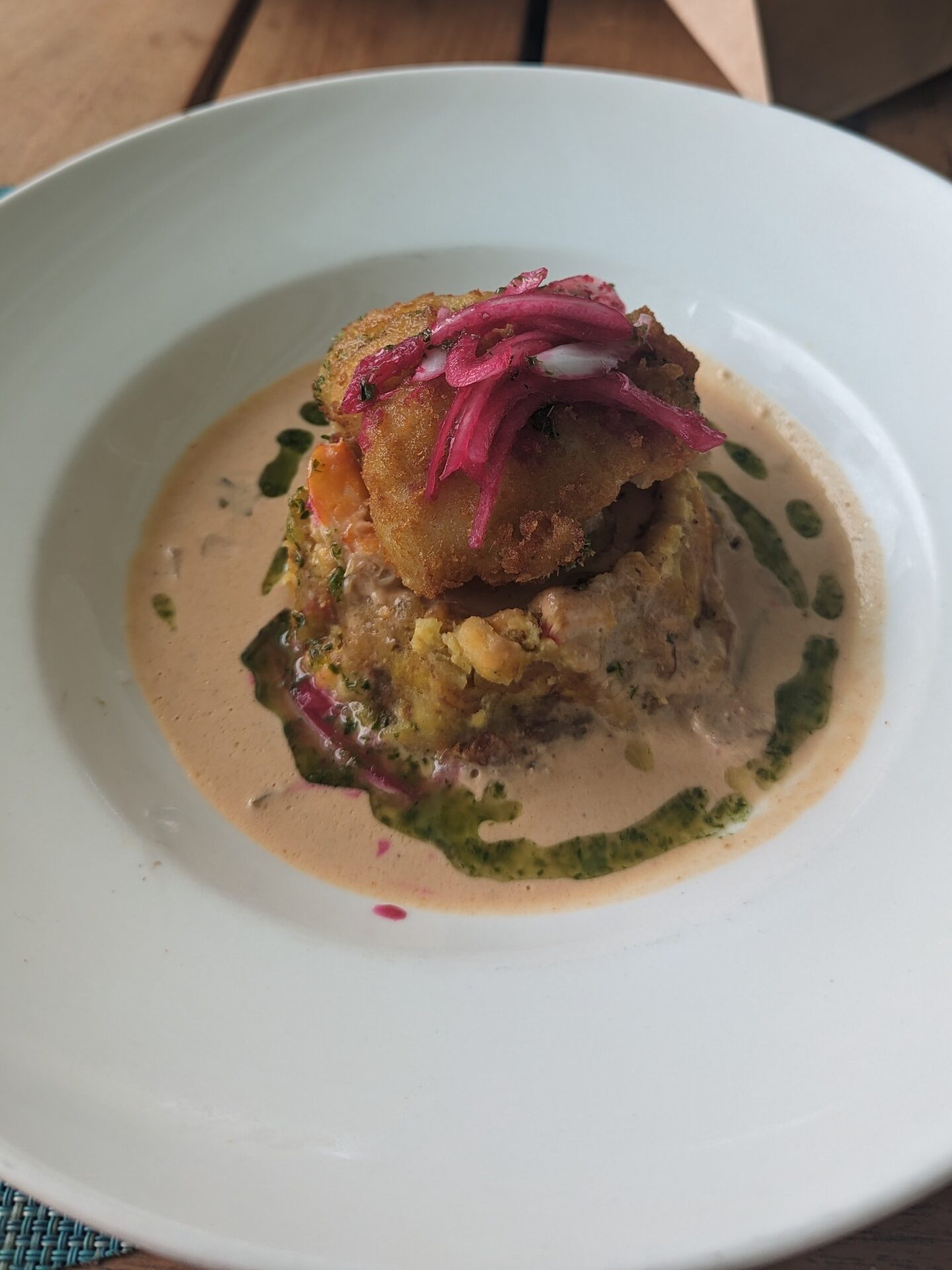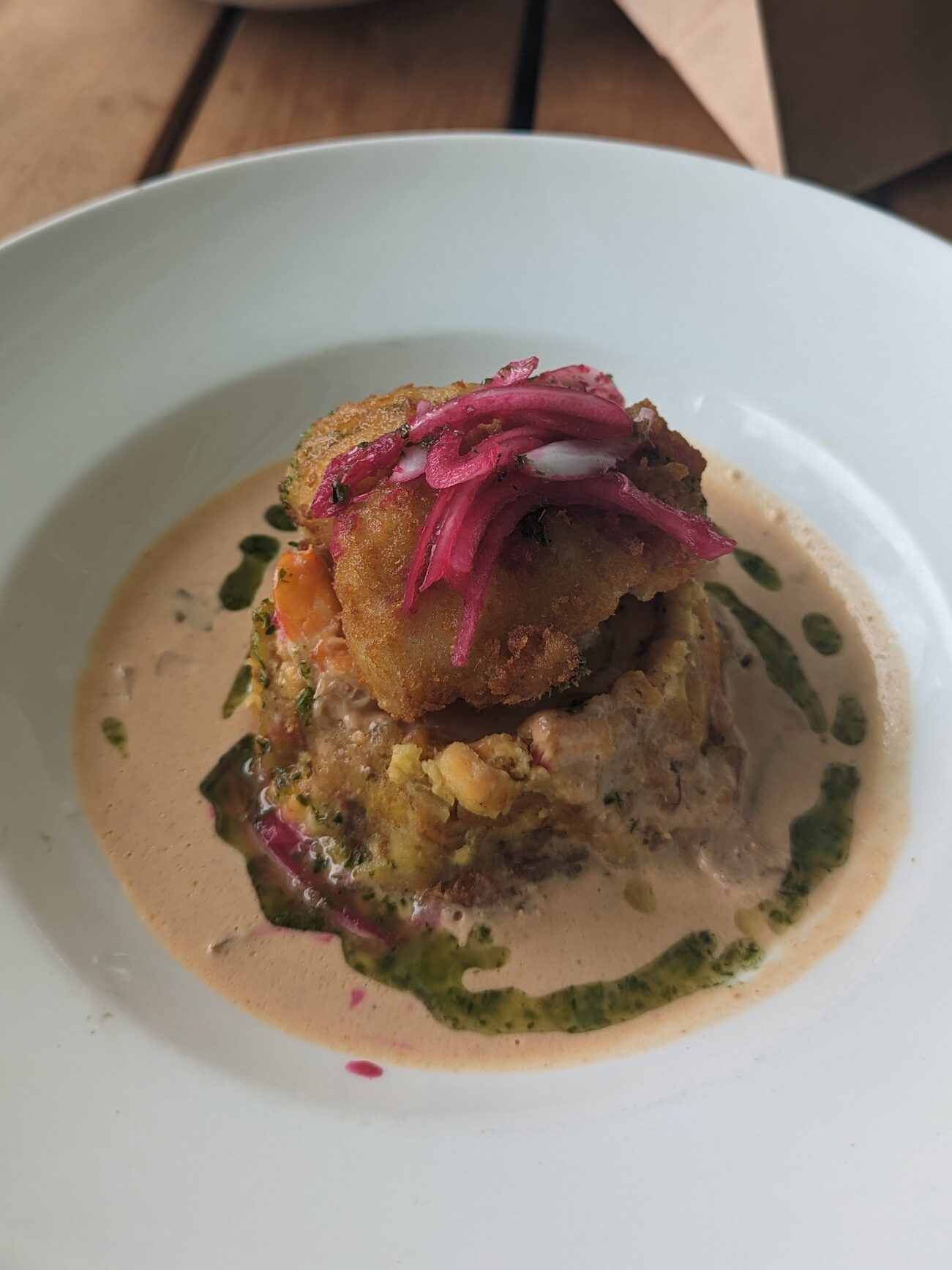
Coco Fongo at Rum Runner
Punta Cana in the Dominican Republic is a force to be reckoned with when it comes to top-tier travel and food destinations. This township on the most easternmost part of the country is the most visited destination in the Caribbean and the second-most traveled destination in Latin America, and I see why. From beginning to end, I had an unforgettable experience that already has me planning my next DR adventure.
Margaritaville Reserve Cap Cana was the resort of choice. An all-inclusive stay with an adults-only and separate kid-friendly side. Now knowing that the kid-friendly section was only two hops and a skip away, it makes sense as to why everything shuts down at midnight. As someone who thoroughly enjoys night-life and traveling with a group of like-minded friends, we had to make our way to Downtown Punta Cana to revel in nightlife, and we had a ball! I would be delighted to tell that story another time. So, without further ado, here are the delicious meals I ate in the Dominican Republic.

Mangú con Los Tres Golpes
This popular breakfast dish was served as a part of the many breakfast options at Margaritaville. This dish is a Dominican staple traditionally served at all times of the day. The meal consists of mangú, mashed green plantains; longaniza (Dominican salami); fried cheese, and a sunny side-up egg with pickled onions. This meal was a hit, or should I say Los Tres Golpes, the three hits. I don’t know how to explain it—everything just paired so well together. The saltiness of the fried cheese and salami added extra depth to the mangú, and the acidity from the pickled onions balanced the saltiness. As a Midwestern girlie, I didn’t quite understand fried cheese for breakfast as it’s typically something you eat later in the day, but the entire meal was chef’s kiss.
Pica Pollo
Plantains are an important staple in Caribbean food practices. The ripe or unripe starchy fruit provides a balance to a meal like no other. So a pretty good meal on the go is chicken with tostones. This meal was indeed a great late-night snack after a fun night of dancing and a few shots of Patron. Two of my friends randomly left and came back with two to-go plates of fried chicken and tostones. Not only was it filling for a group of 8 it was just what I needed after a night of partying. I compare it to eating fries at the bar, the perfect starchy salty snack to bring back those electrolytes you danced off.

Coco Fongo
This was the standout meal at the resort restaurant Rum Runners, which features local and traditional Caribbean cuisines. Here is where I wanted to dine most, however during my first attempt on day one, they were closed for a private event. So on day two, after basking in the sun, my group made it to the dining table at Rum Runners. My experience with the star meal did not happen until day four, however, my group had already had Rum Runners oxtails before my arrival, and I had to try them. The Oxtails over yellow rice was reminiscent of a dish my aunt makes on Christmas day, a festive delicacy with tender oxtails what a way to celebrate baby Jesus. Day four rolled around, and we were rushing to have our last meal before our 4-hour flight back to the States. The Coco Fongo was divine! The dish consisted of seafood mofongo in a cream sauce topped with fried fish, shrimp, and pickled onions. It was true comfort food.
While writing this I learned that mangú and mofongo are similar yet quite different from one another—let me break it down. Even though they share similar ingredients, these dishes not only originated in analogous countries, but they are also prepared differently. The Dominican Republic is home to mangú while Puerto Rico claims mofongo The cooking techniques are vastly different from one another, while mangú is made by boiling green plantain, mofongo is made by frying them. For both dishes, a pilon is used to mash the plantains to reach that creamy yet starchy consistency. The nuances of mangú is that it is topped with pickled onions, and for mofongo, it is usually served with chicharrones, chicken, or seafood.
It is safe to say that I’ve only touched the surface of Dominican cuisine which is truly quintessentially Caribbean. From what I’ve had so far, Dominican cuisine has heavy African influences with a fusion that holds the island’s mosaic history.

